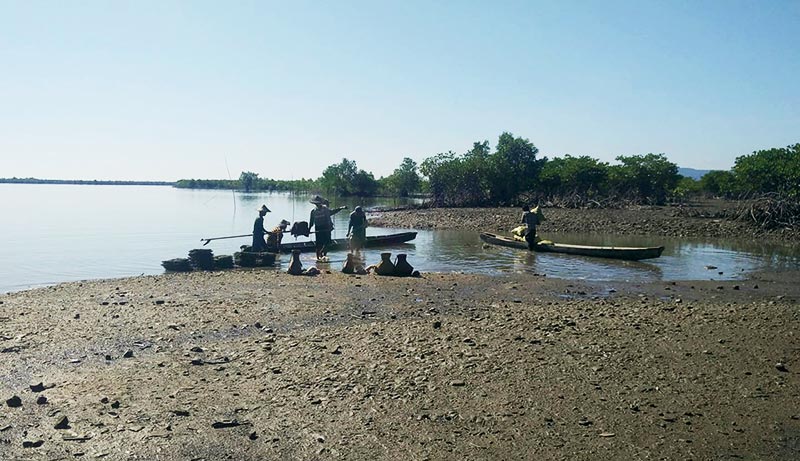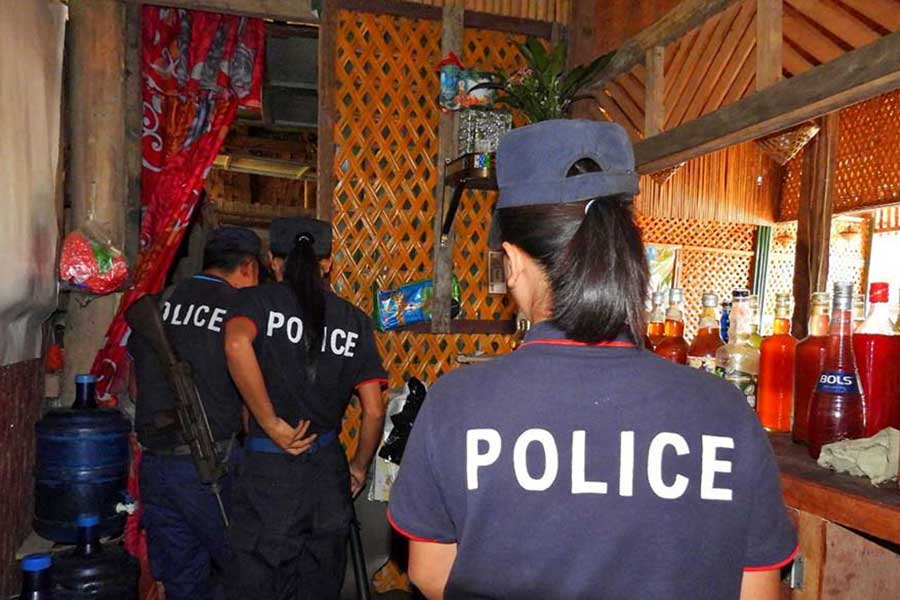- Timber prices soar in Arakan State amid supply shortages
- AA-led forces clash with regime near strategic Nat Yay Kan base in Ngaphe Twsp
- Five murder cases recorded in Arakan State over six months
- Weekly Highlights from Arakan State (Jan 12-18, 2026)
- Arakan Army denies junta claims of drug involvement
Arakan State mangrove cultivation efforts dealt blow by Cyclone Yaas
Last month’s Cyclone Yaas destroyed more than 1,000 of the 100,000 mangrove trees planted as part of self-reliant mangrove conservation efforts in Arakan State, according to the growers.
07 Jun 2021

DMG Newsroom
7 June 2021, Sittwe
Last month’s Cyclone Yaas destroyed more than 1,000 of the 100,000 mangrove trees planted as part of self-reliant mangrove conservation efforts in Arakan State, according to the growers.
Planted across more than 2,000 acres in Ann, Kyaukphyu and Taungup townships, the trees met their demise at the hands of Cyclone Yaas, which formed over the Bay of Bengal in the last week of May.
“The trees were not yet resistant to the storm,” said Ko Myo Lwin, a leader of the Ann Township Mangrove Trees Conservation Group. “More than a thousand trees were destroyed. There are difficulties in self-reliant cultivation,” he said.
In addition to wind-related mangrove casualties, the coastal-dwelling trees were also damaged by landslides and strong waves caused by the storm, Ko Myo Lwin added.
Mangroves are seen as an important aspect of climate change mitigation efforts in coastal Myanmar, and in November Denmark said it would provide more than US$700,000 for mangrove reforestation in Arakan State and Tanintharyi Region. However, the Danish Embassy in Yangon subsequently said it would not provide the cash assistance, after the military seized power on February 1.
Ko Myo Lwin said mangrove deforestation remains a concern.
“The reason for the logging is that local people are running out of jobs. In addition, the COVID-19 pandemic has made it more difficult for locals to earn a living. So there are people who depend on these mangroves for their livelihood. They cut and sell it to bricklayers and charcoal makers,” he explained.
The Forest Department compiles and updates information on mangrove forests throughout Myanmar once every five years. The most recent tabulations, from 2015, found that Arakan State had 395,726 acres of mangroves in total.
“We conduct an inventory of how many acres of mangroves there are every five years, and after the 2020 [data is tabulated], we will compile an inventory with the FDCCA [Forest Department Climate Change Adaptation] to see if these mangroves are damaged,” said U Zaw Myo Hlaing, assistant director of the Arakan State Forest Department.
Mangrove conservation efforts have shown promise as well as suffered setbacks in recent years. Mangrove cultivation has been halted in Myebon Township due to local security concerns, for example, while in Ramree Township, 250 acres of mangroves are being cultivated annually under a five-year programme undertaken by the FDCCA.
Similarly, the Humanitarian Assistance and Resilience Programme (HARP) and the Mangrove Service Network (MSN) jointly planted seven mangrove forests in Manaung Township in November 2019, at an estimated cost of K20 million.
The Rakhine State Biodiversity and Nature Conservation Association (RBANCA) is focusing on conserving the mangroves currently growing near Nanthar Island and the Mayu Estuary, RBANCA Secretary Ko Yan Naung Soe told DMG.
There are about 300 acres of mangroves near Nanthar Island and the mouth of the Mayu River, according to RBANCA.
“We will work with the local people to protect the existing mangroves as much as possible. If you plant a mangrove tree, it will grow into a big tree only after many years. So the number one protection is not to waste what you have,” he said.
In Arakan State and other coastal parts of Myanmar, mangrove trees are often cut down to develop areas for prawn or fish farming, or to make way for dams, destroying the habitats of aquatic wildlife in the process, mangrove conservationists say.














.jpg)


